
By:
- Jarrett Haley
Published Date
By:
- Jarrett Haley
Share This:
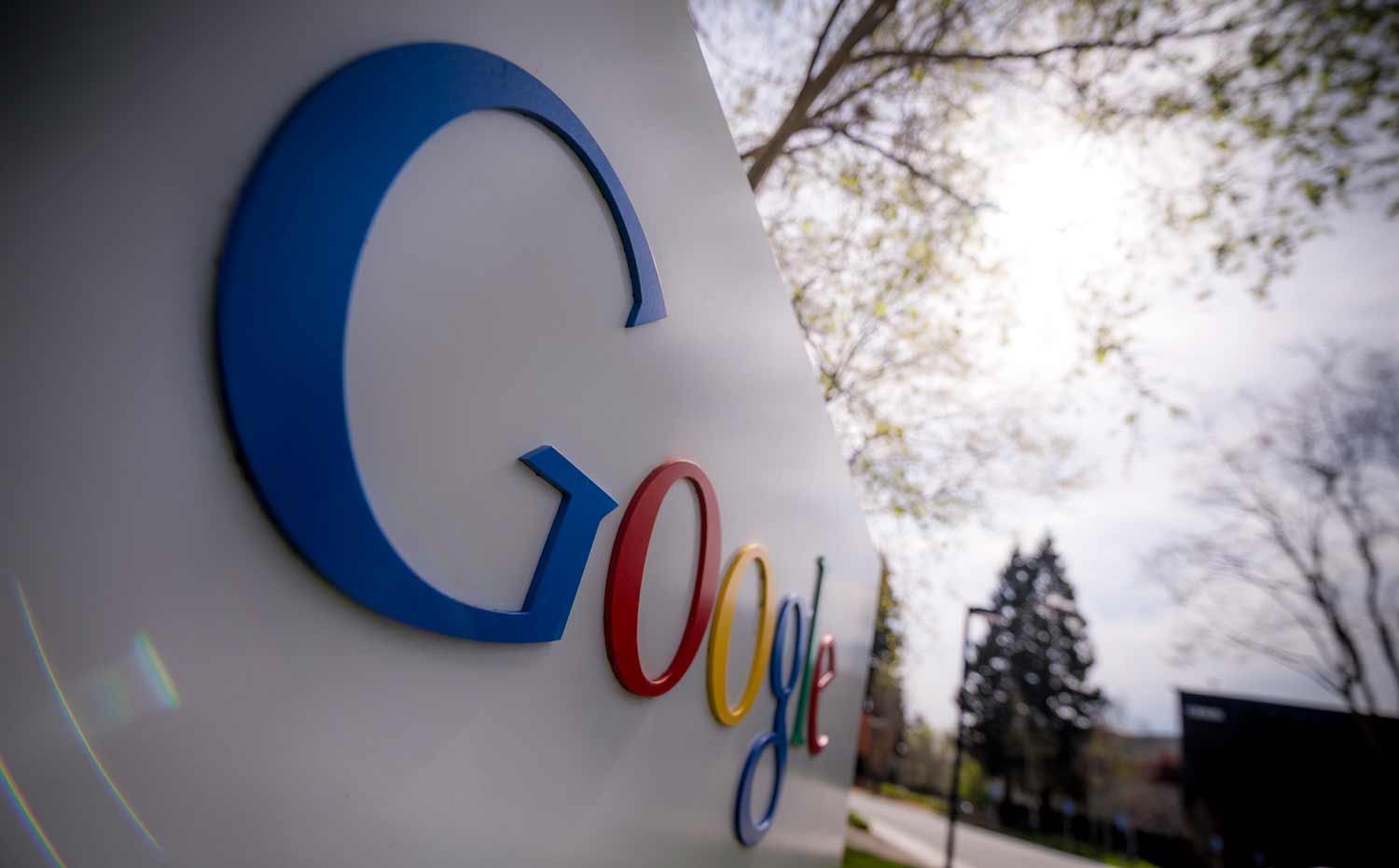
Photos by Erik Jepsen/UC San Diego Publications
Humanizing the Research Enterprise
UC San Diego & You, a new faculty symposium series, brings research to life at Google headquarters in Silicon Valley
When you walk into a building at Google, there comes the realization: behind each of their many tools, there are real people—in offices, at desks—creating and maintaining the systems that have become so ingrained in our lives they are taken for granted, like water flowing from a faucet.
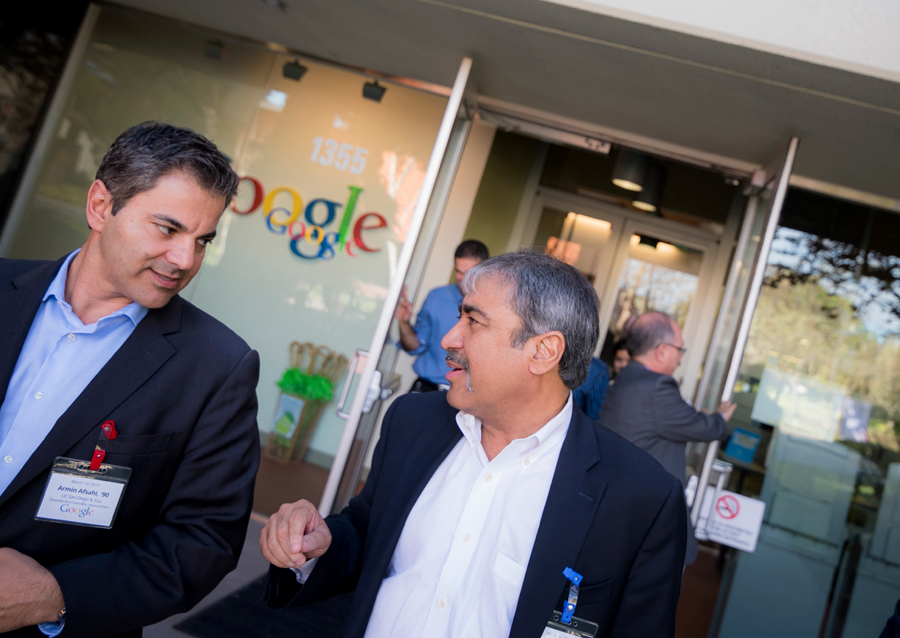
From left, Armin Afsahi and Chancellor Pradeep K. Khosla
The same can be said for UC San Diego. Once you realize that there are people behind the campus’s many research breakthroughs—people actively working to solve the world’s most complex and pressing problems—it instantly seems far less of an institution, and much more of a community.
UC San Diego & You, hosted by Alumni and Community Engagement, is a new series of events that brings the university’s world-renowned faculty and campus leadership to the Triton family, where they live and work. The events highlight the human element of the university’s research community, allowing preeminent thought-leaders to talk directly and personally about the diverse initiatives they work on every day.
“We are here to share the impact UC San Diego has on our society and world,” said Chancellor Pradeep K. Khosla. “We want to demonstrate the different types of thinking we foster—design thinking, open-ended creative thinking, entrepreneurial thinking, problem solving, computational thinking—this is where we are headed as a campus.”
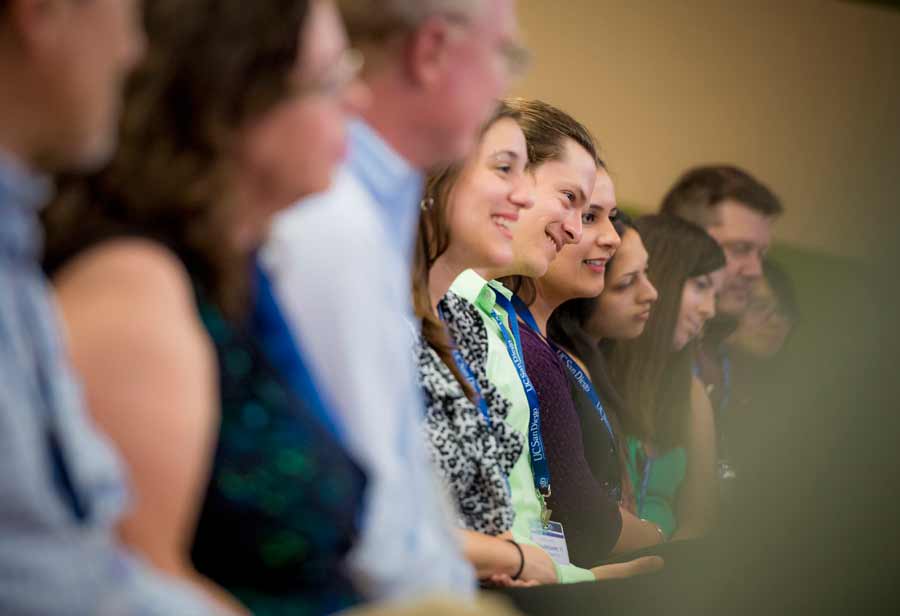
The first of several planned events was hosted at the headquarters of Google on Saturday, March 14 in Silicon Valley. Featured UC San Diego faculty members gave short, TED-style talks to an audience of more than 150 alumni, donors and parents. The event also brought campus leadership to Google, including Vice Chancellor for Advancement Steve Gamer, Dean of the Jacobs School of Engineering Albert Pisano and Associate Vice Chancellor for Alumni and Community Engagement Armin Afsahi.
Leading the evening’s talks was Brenda Bloodgood, ’01, a neurobiologist with the Center for Brain Activity and Mapping. Her research involves the relationship between DNA and brain activity—how the interactions between the two allow us to sense, act and have cognition. Bloodgood’s work has yielded imagery that literally illuminates how the brain works, creating maps of brain activity reminiscent of an electrical storm. Patterns within these seemingly random bursts of light will someday lead to a greater understanding of how to combat a host of debilitating neurological diseases.
Nathan Gianneschi, associate professor of chemistry and biochemistry, presented on the profound benefits that nanotechnology can have on modern medicine. Gianneschi’s team is currently developing nanoparticles that can be injected into the body and made to swarm into inflamed problem areas such as tumors, where they could more effectively deliver medicine or even assemble to form larger things, such as a “scaffolding” to support failed heart tissue.
Scott Klemmer, co-founder and associate director of UC San Diego’s Design Lab, shared his theory that design in the modern age is the one element that melds physical, digital and social worlds. In particular, he sees the world of the web yielding new opportunities to turn design into a practical science, a discipline ripe for analysis, aggregation and dissemination of results, in order to improve how our lives function.
“When we design, we’re inventing a new future,” said Klemmer. “The role of our research projects is to find out what life is like in that future, and then send postcards back to the rest of us. When you see projects from the Design Lab, you see examples of what the future might be like.”
Susan Shirk, professor at the School of International Relations and Pacific Studies and chair of the 21st Century China Program, began with a summation of her 35 years spent studying Chinese politics: “Just when you think you’ve got it figured out, things happen that really surprise you.”
The latest surprise, she said, is the “strong man rule” of China’s current president, Xi Jinping, whose dictatorship bears striking resemblance to that of Mao Zedong, even though Xi and his family suffered greatly under the Maoist regime.
Joe Wang, distinguished professor and chair of nanoengineering at UC San Diego, captivated the audience with the prospect of a real-life “Fantastic Voyage,” wherein various methods of propulsion can pilot “microrockets,” or nanoengineered vessels. These could be used inside the body to attack cancer cells, or set upon open waters to clean up future oil spills or chemical attacks.
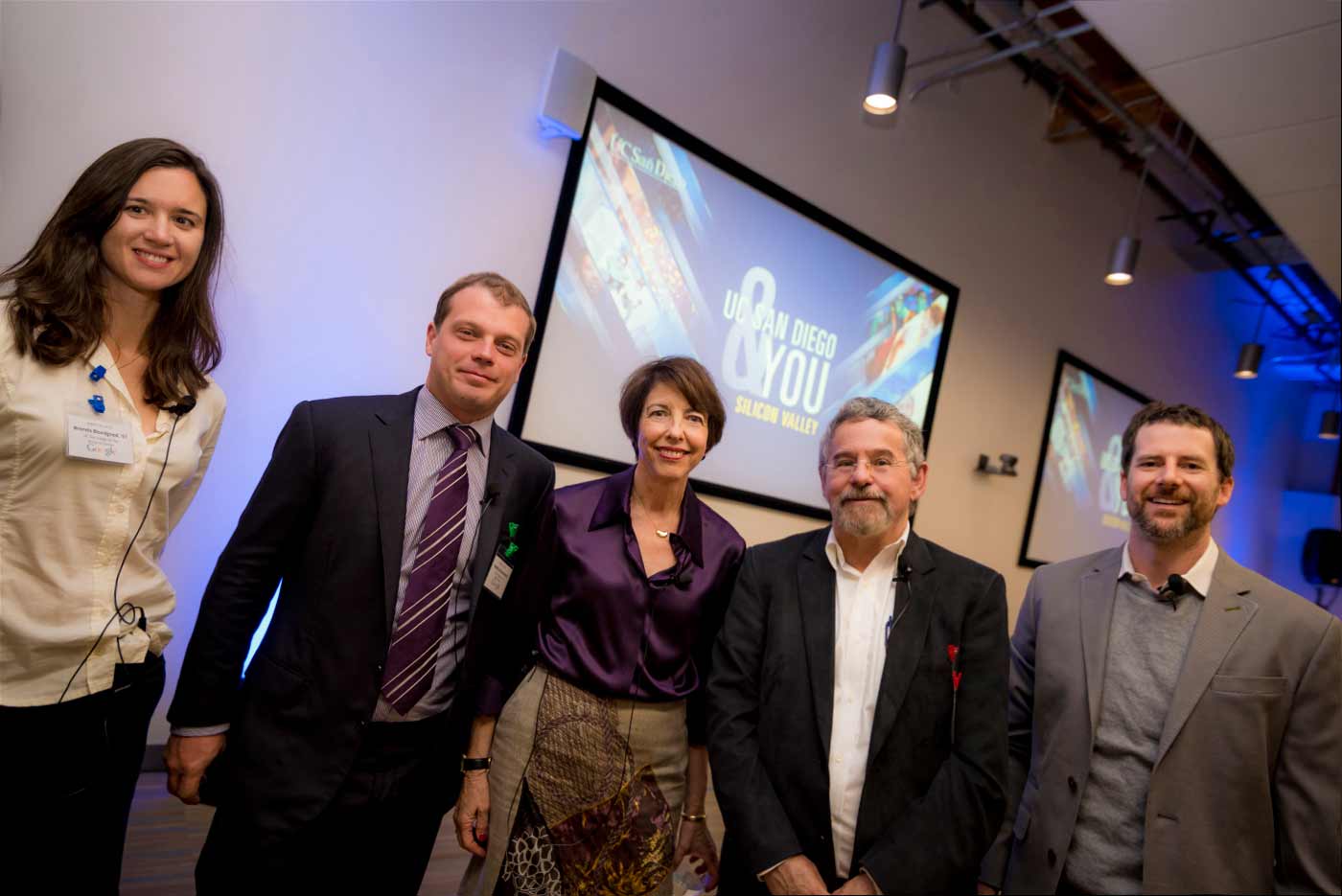
From left, Brenda Bloodgood, Nathan Gianneschi, Susan Shirk, Joe Wang, and Scott Klemmer
Wang also touched on his work as director of the Center for Wearable Sensors, which has made great strides in creating non-invasive methods of measuring body chemistry. Diabetics, for instance, may someday give themselves the last finger-prick to check glucose levels; Wang’s team recently developed a temporary tattoo sensor that can determine those levels right from the skin.
The hallmark of the UC San Diego & You series is deliberate absence of a standard Q&A session. The brief talks are instead followed by a hosted reception where guests can engage in conversation with the presenters and experience their ambition and expertise firsthand.
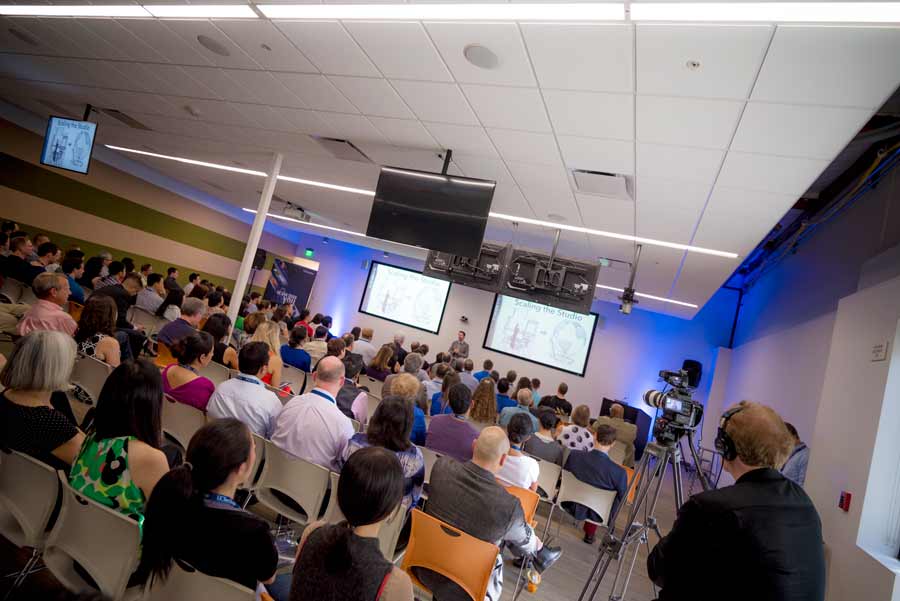
“I talked with Scott Klemmer about my degree in history at UC San Diego, and he asked if that background gave me any ideas about the future of design,” says Neal Quigley,’05, a recent transplant to the San Francisco Bay Area. “It’s an incredible feeling to talk to someone at the top of their field and be asked for your input—just the offer made me want to think more about ideas.”
“Events like this keep the intellectual culture alive,” said Gary Curtis, ’69, a biomedical entrepreneur and longtime alumni supporter. “For a company like Google and for UC San Diego, it's a symbiotic relationship.”
The sentiment was shared by Roshni Chandrashekhar,’13, a software engineer at Google who helped the evening come together. For her, the venue was a natural extension of the event’s spirit of community. “At UC San Diego, I was able to connect with so many different people, and I wanted to bring that to Google. Just like the chancellor said, I want to help bring together a holistic idea of what UC San Diego can do.”
“The relationship between UC San Diego and Google is very strong,” said Armin Afsahi, ’90, associate vice chancellor for advancement and chief alumni officer. “Nearly 500 UC San Diego alumni are employed here, and that partnership revolves around talent, research and innovation—all three of which were exemplified tonight, in the speakers as well as the audience, and the connections made between them.”
Learn more about upcoming UC San Diego & You events click here.
Share This:
You May Also Like
Stay in the Know
Keep up with all the latest from UC San Diego. Subscribe to the newsletter today.


